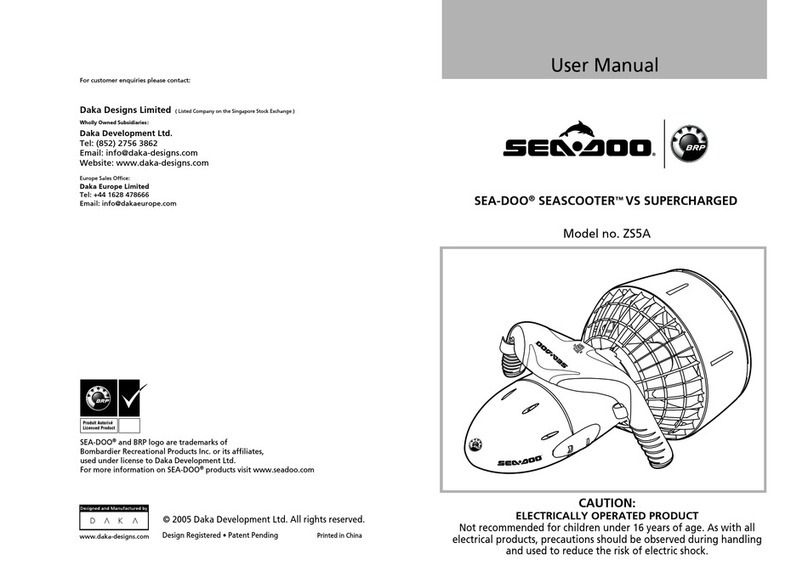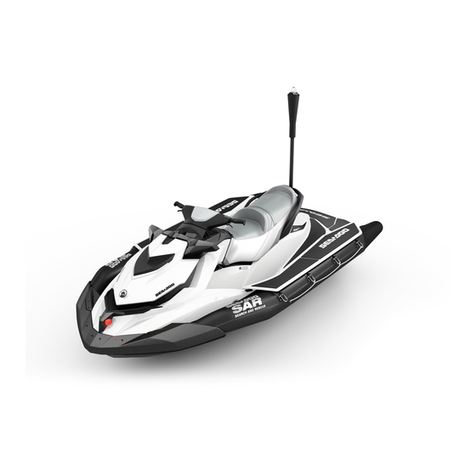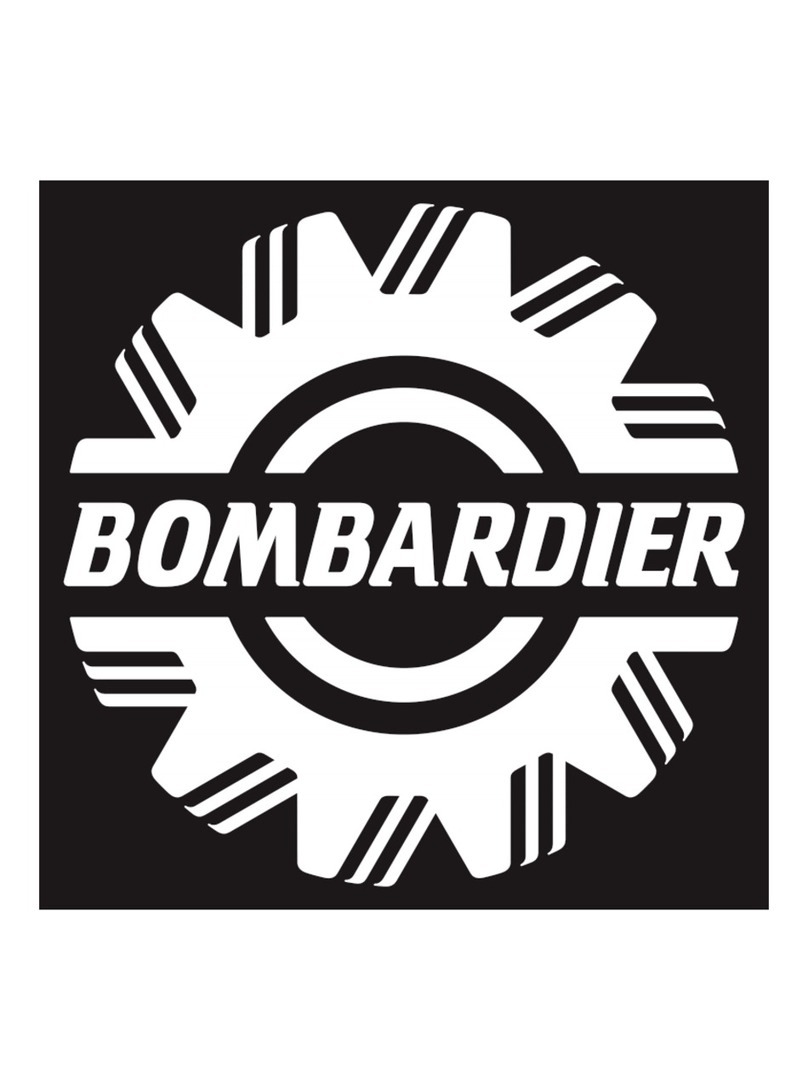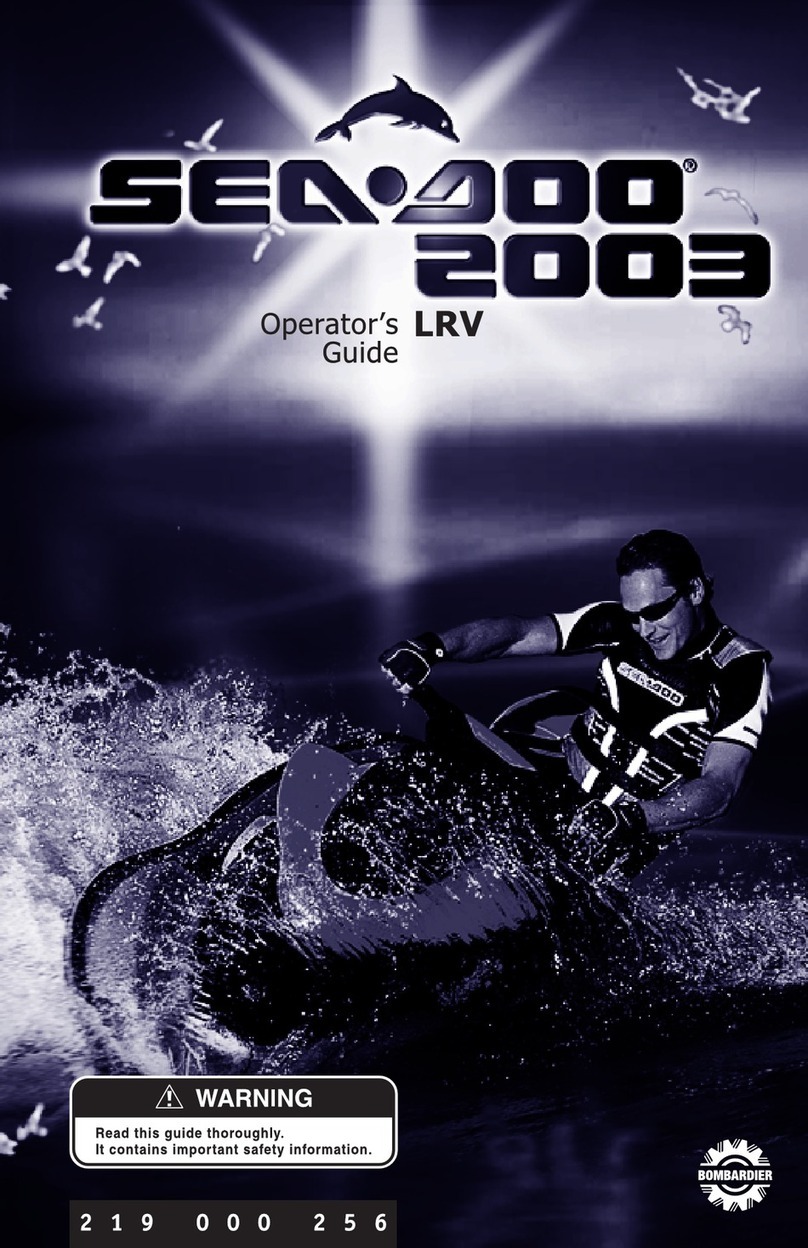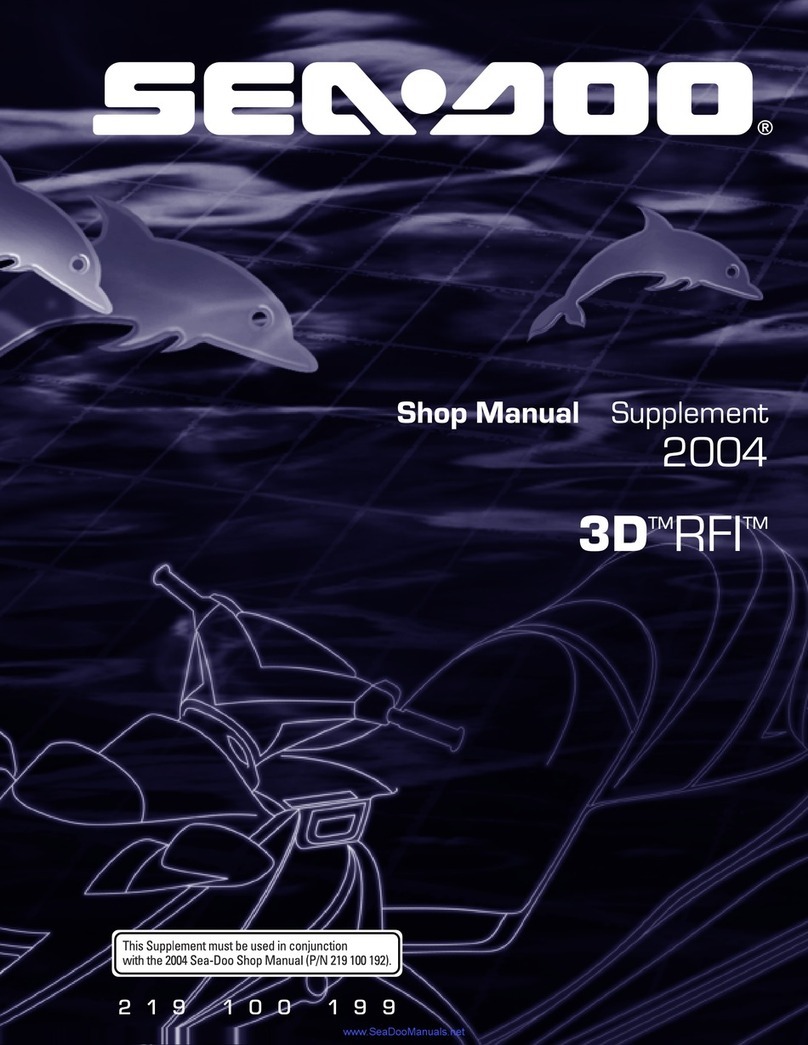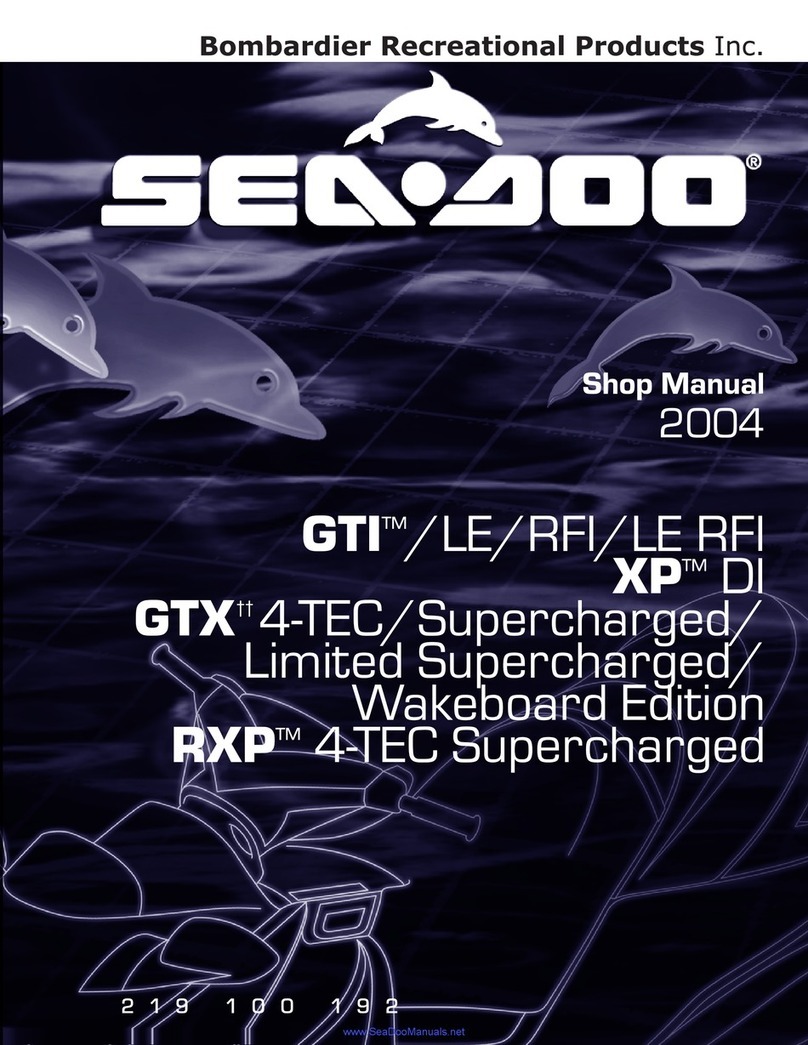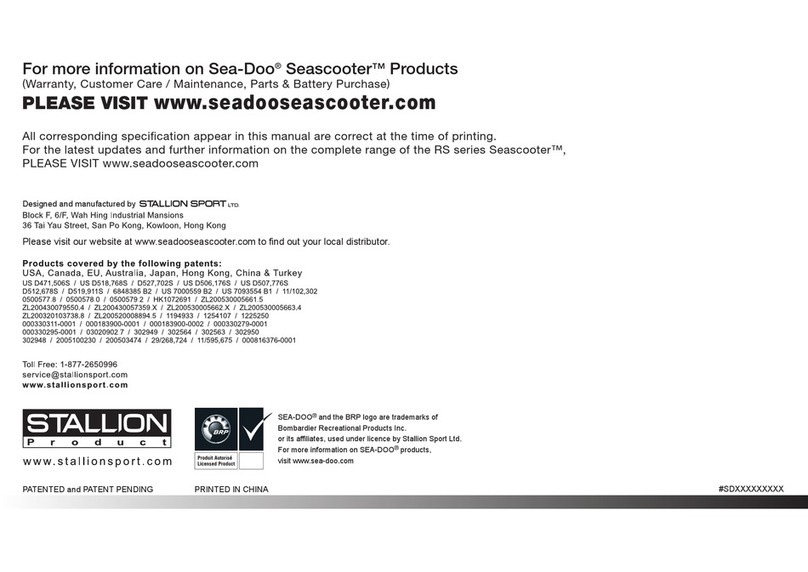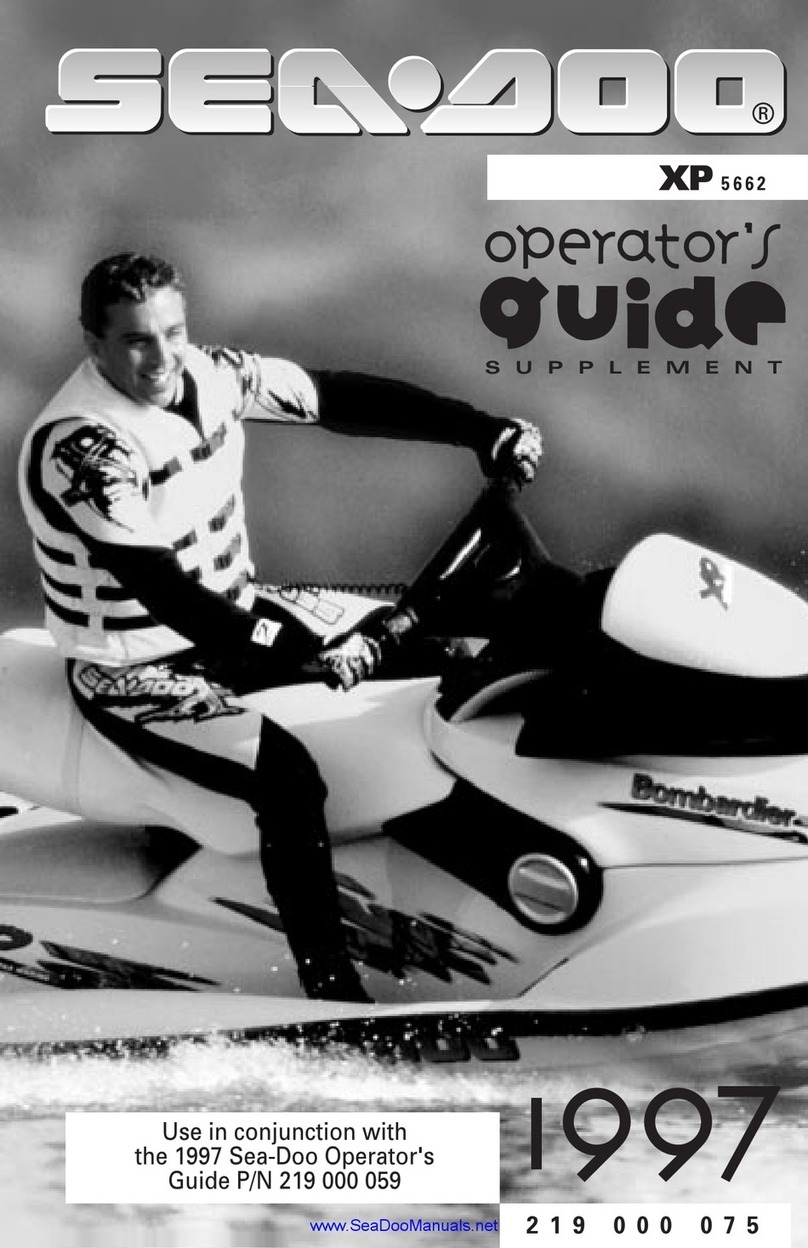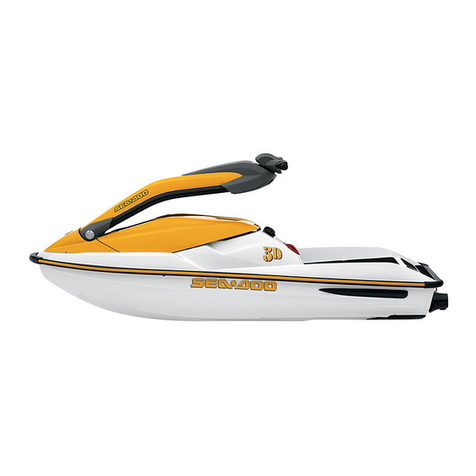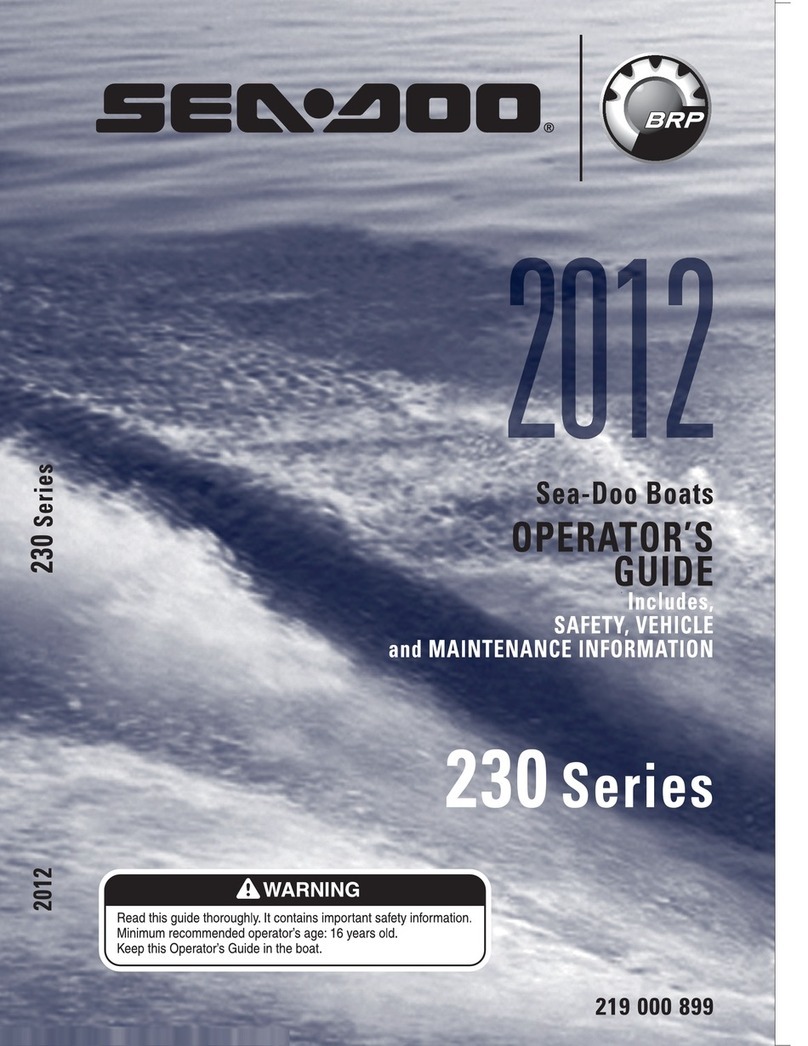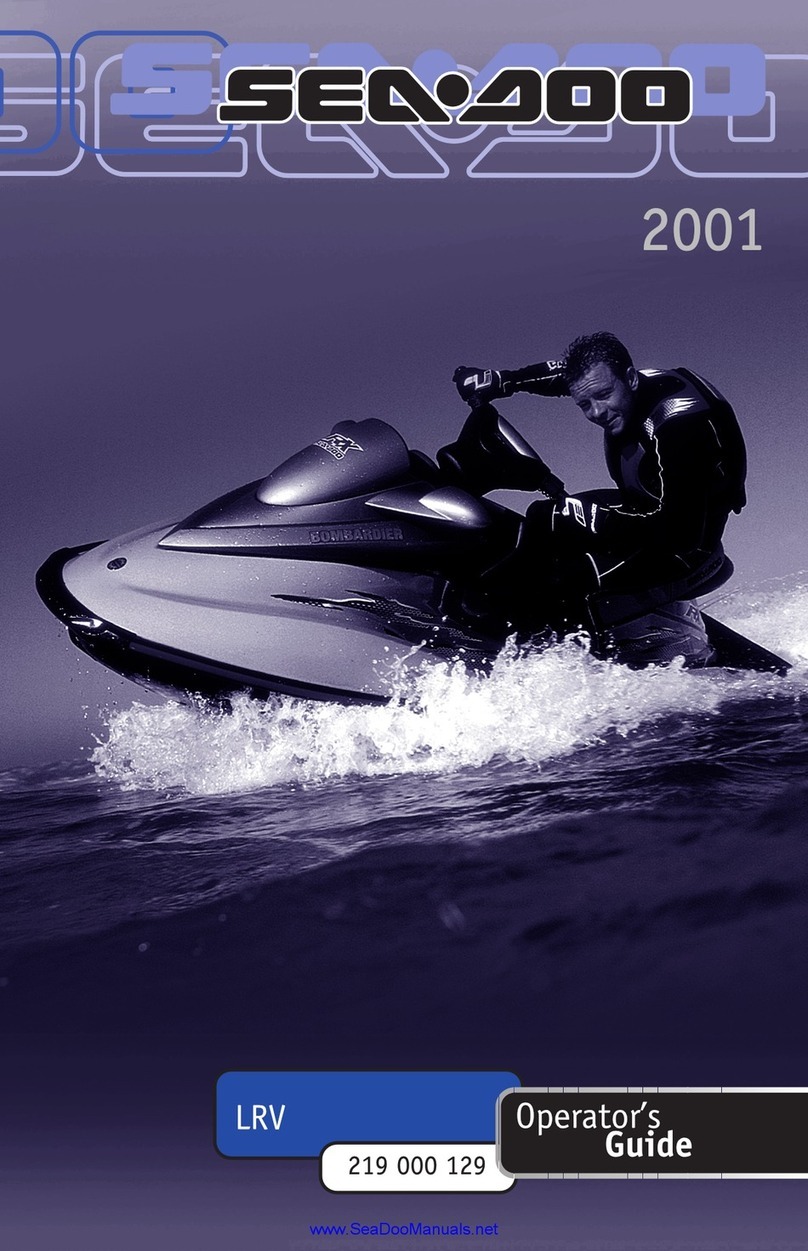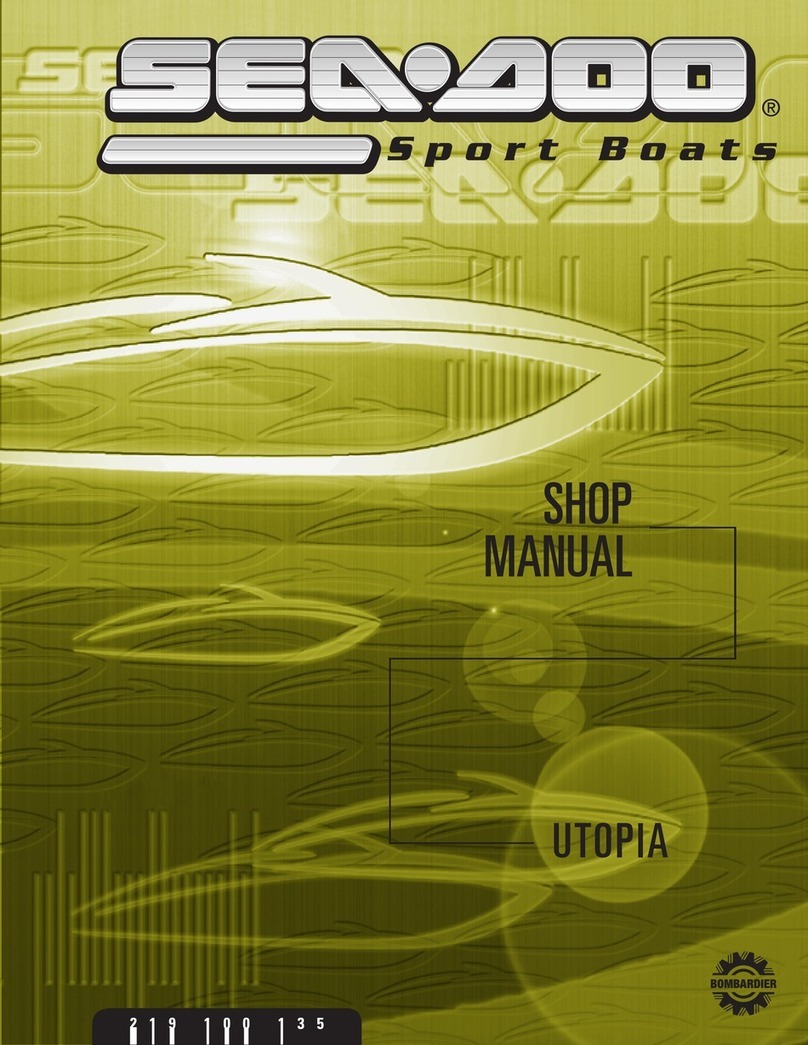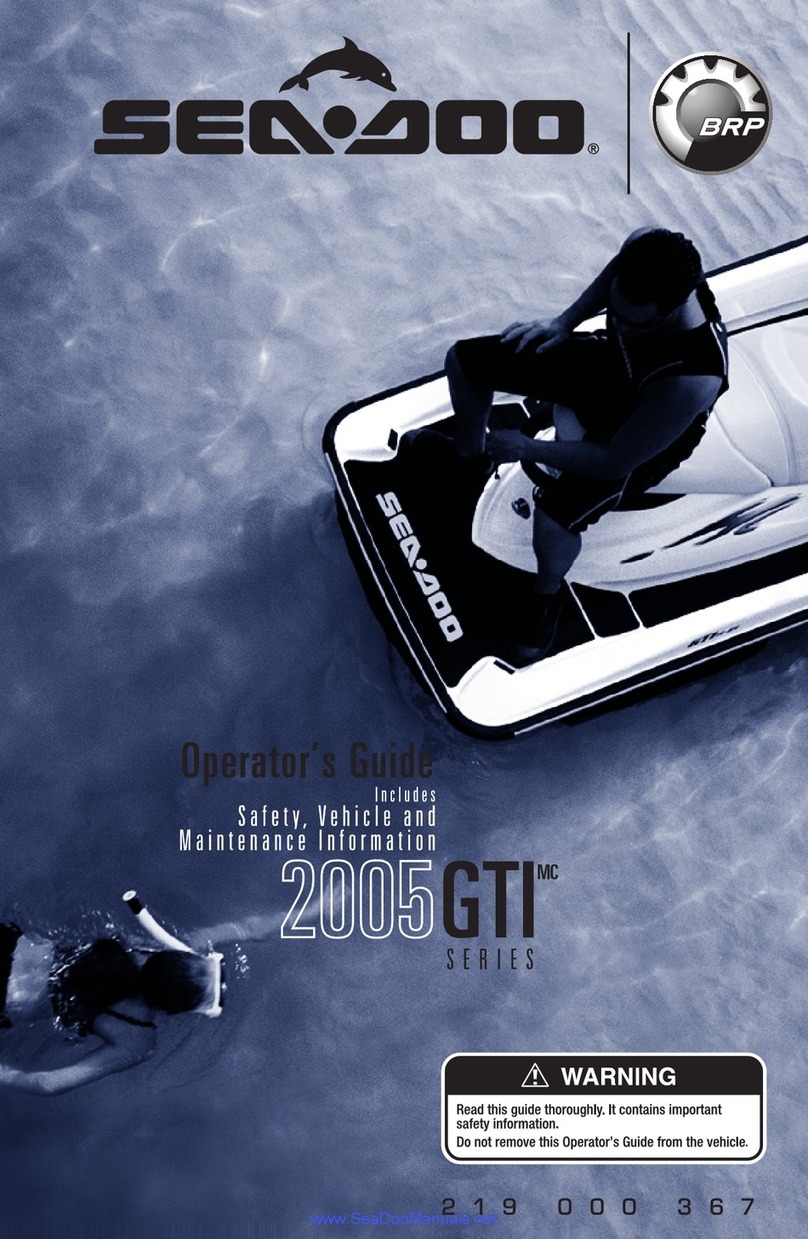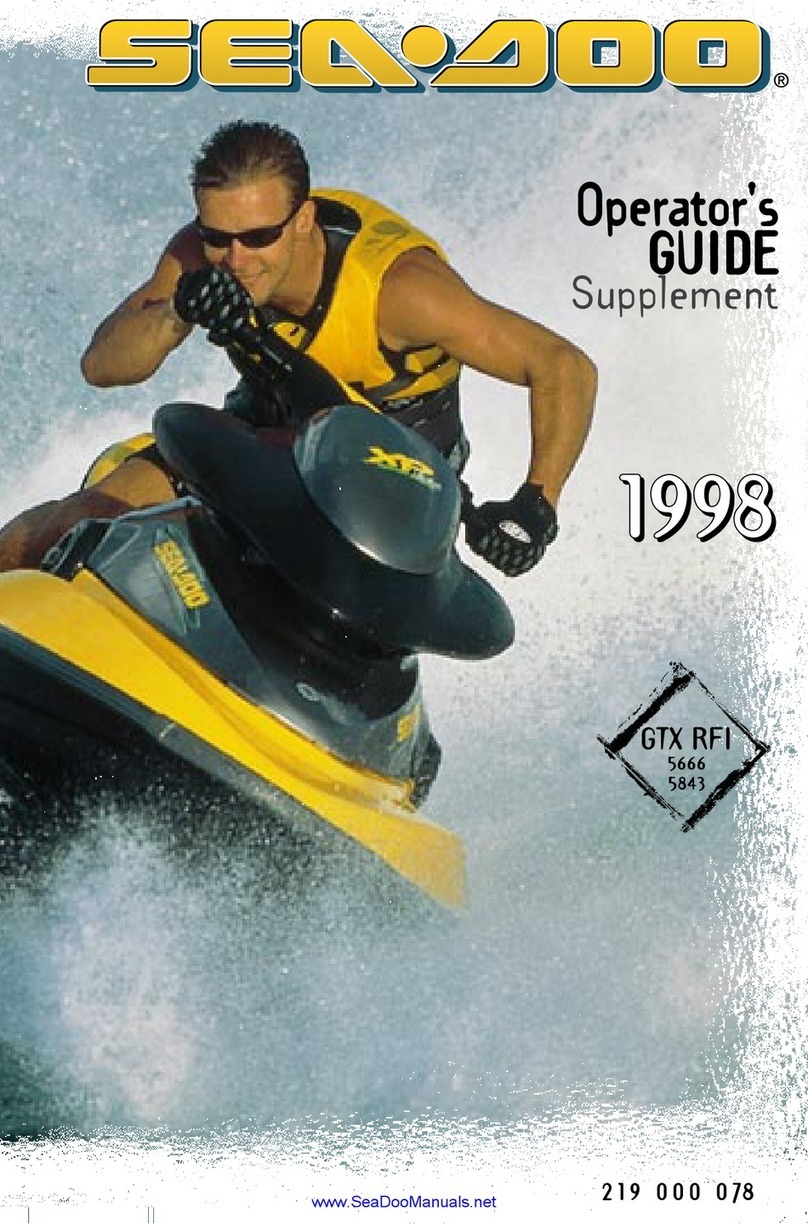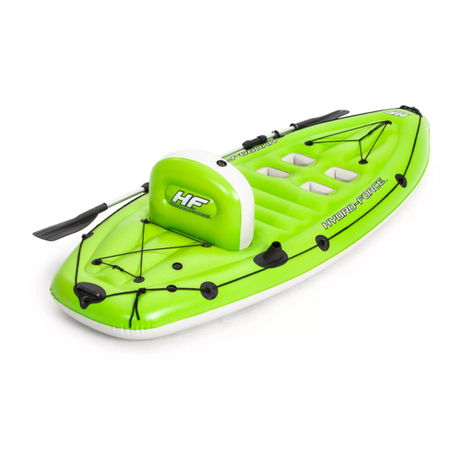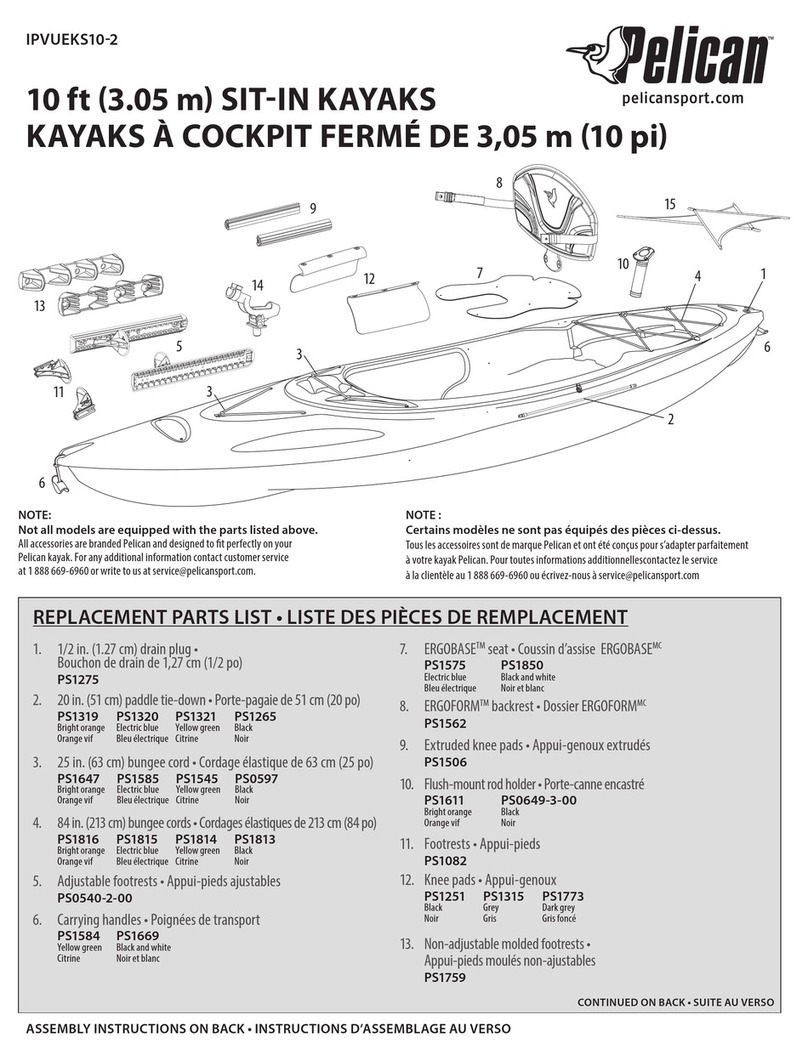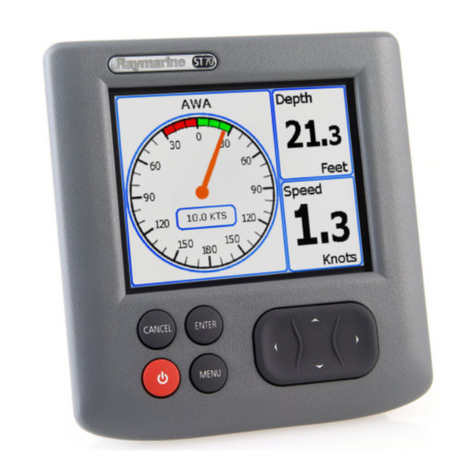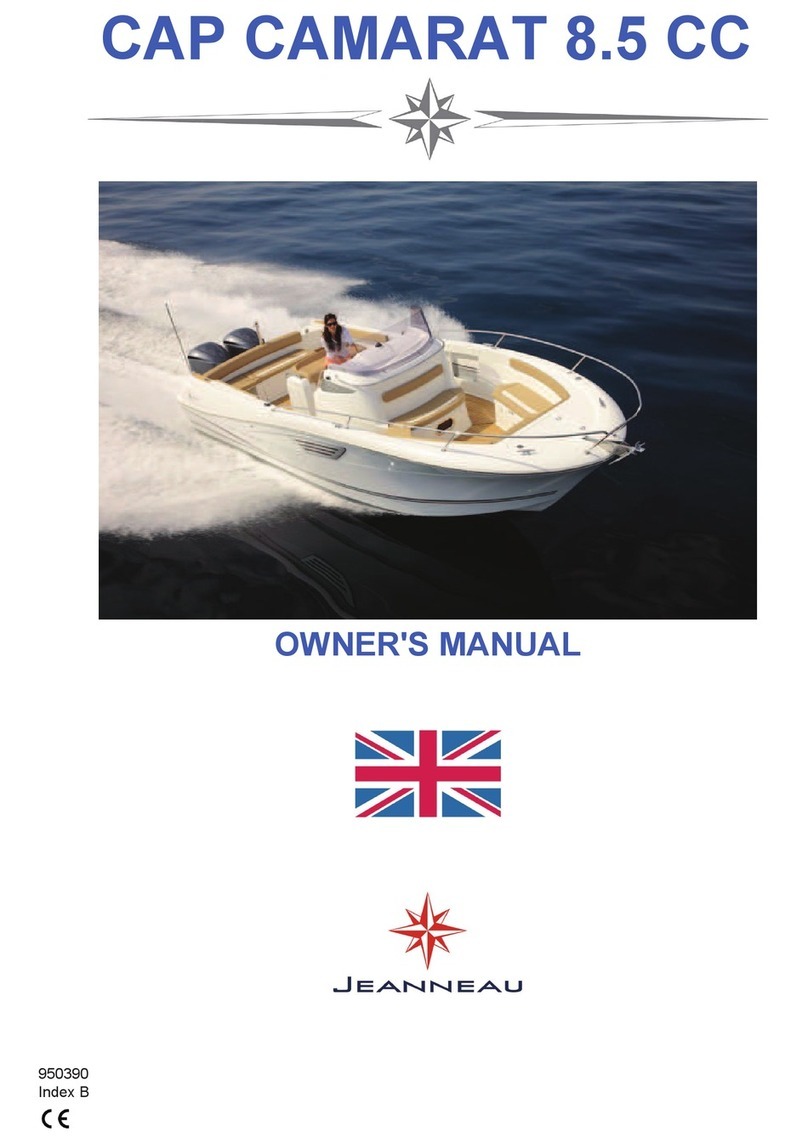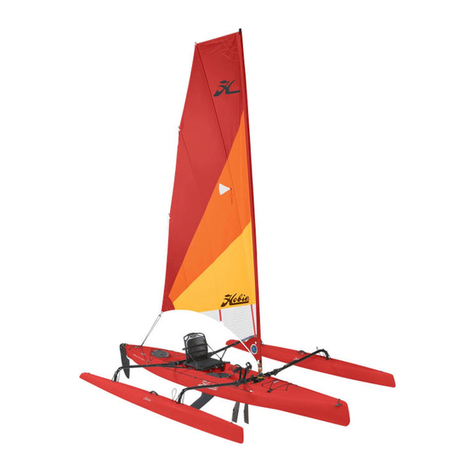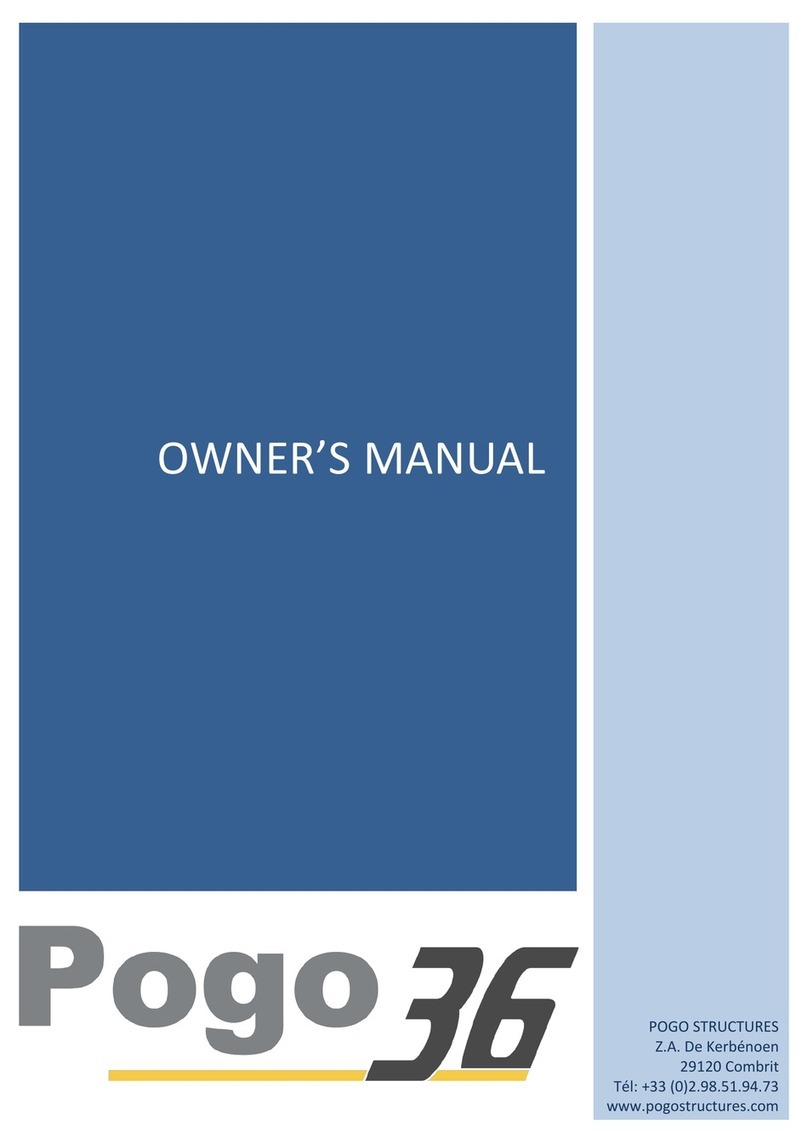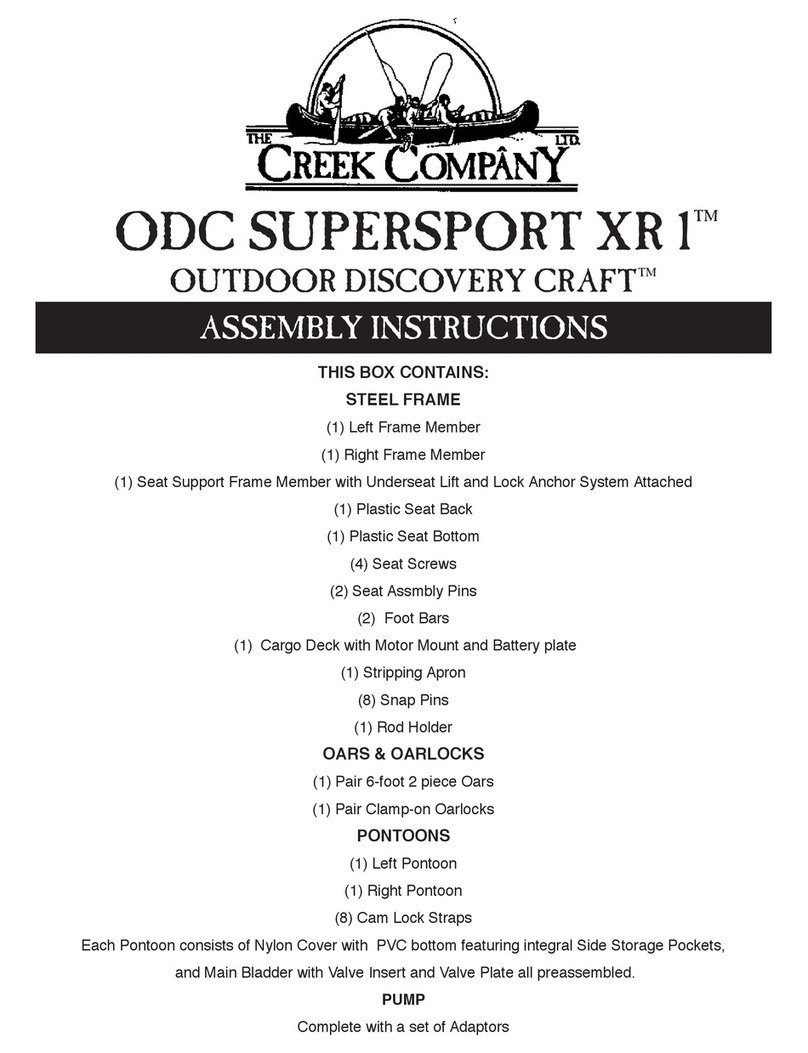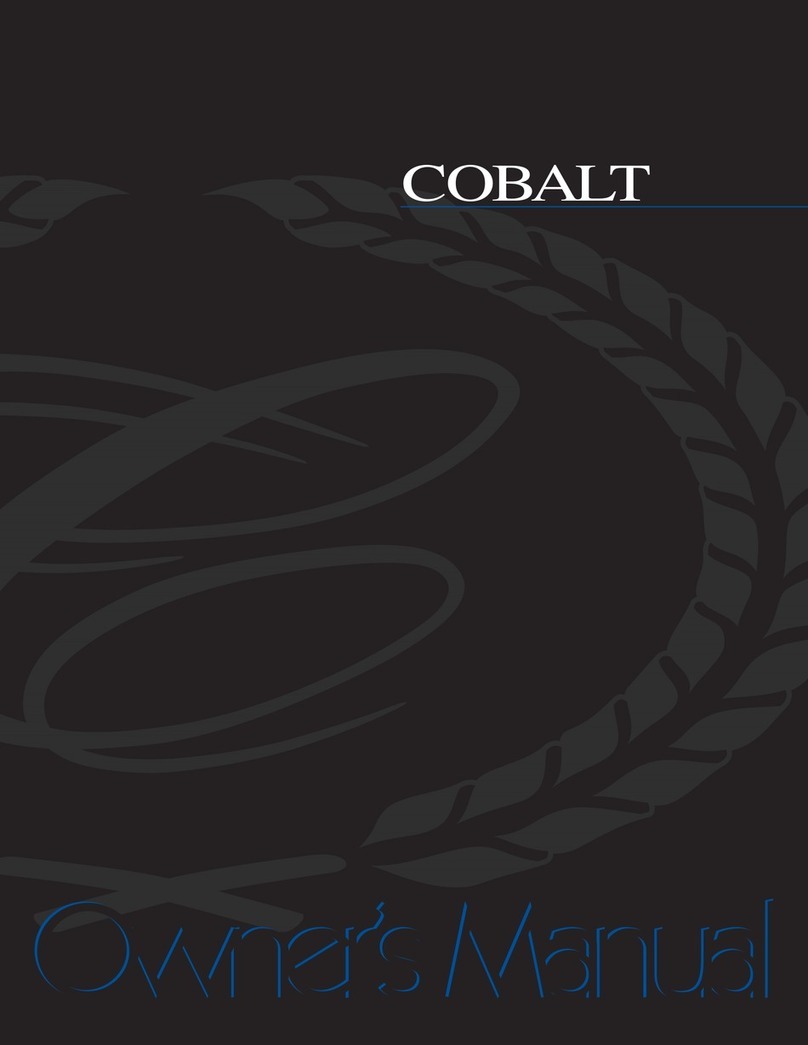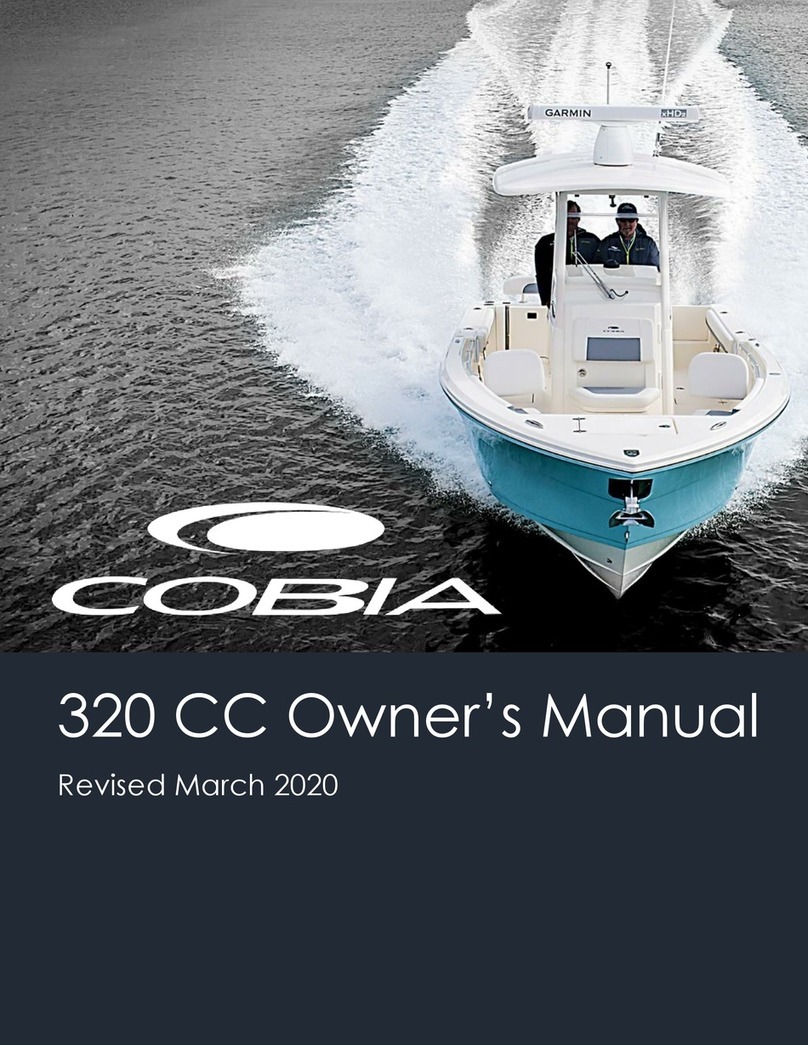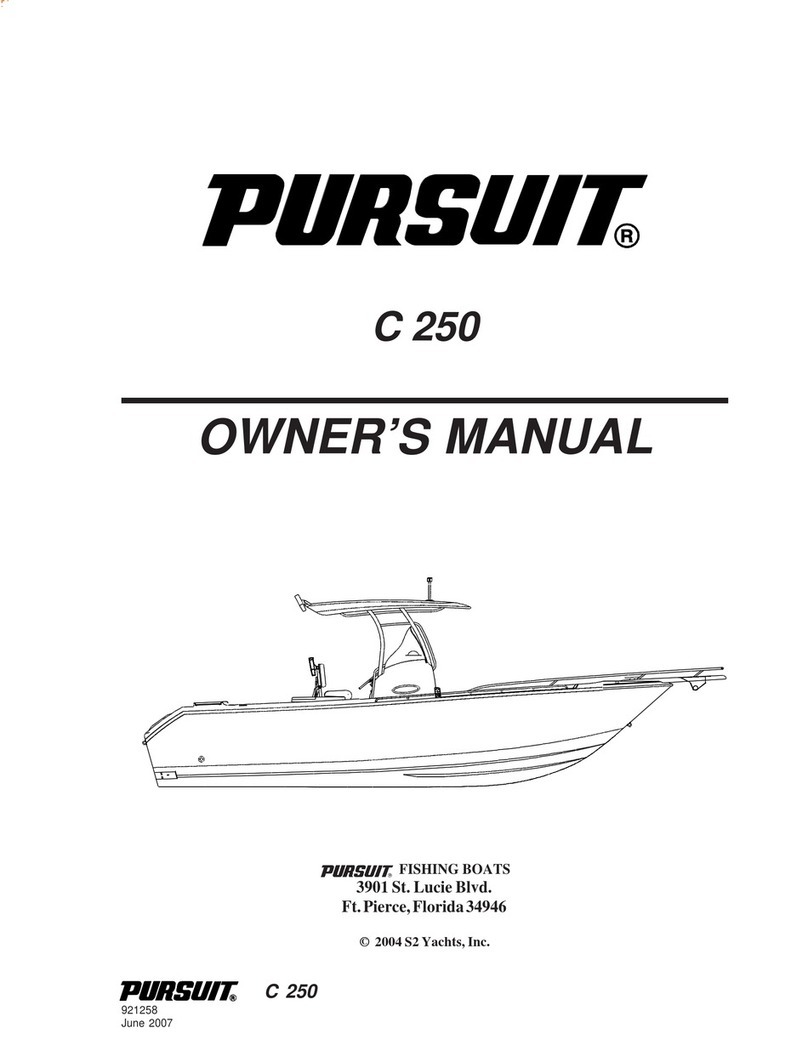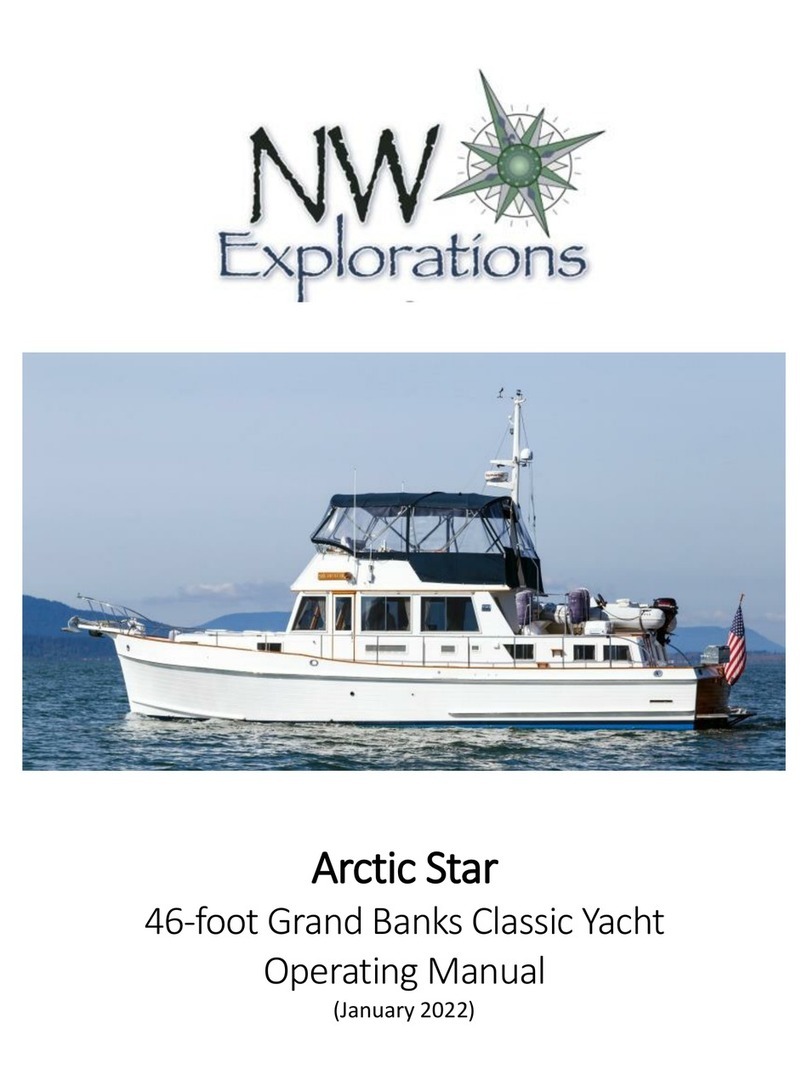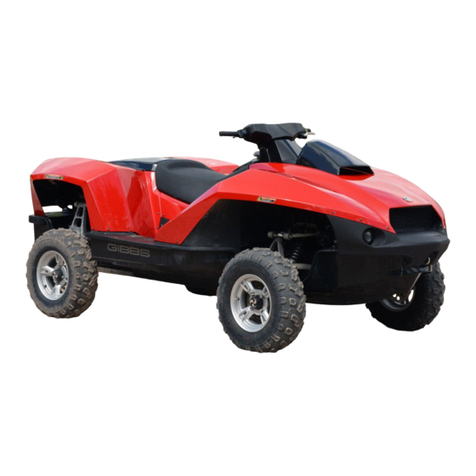
8
Ensure operator all-round visibility is
unrestricted.
While the engine(s) can be stopped by
depressing the start/stop button(s),
good habit recommends that the safe-
ty lanyard be used to stop the en-
gine(s) at all times.
Wave or wake jumping can be danger-
ous and in many regions illegal.
Most boating accidents occur as a re-
sult of the failure of the operator to
keep a lookout for other water users
or other potential hazards. Keep a safe
distance from other boats or water-
craft. Do not attempt to splash others
with your wake. Do not ride the surf
line.
This boat is equipped with bow and
stern navigation lights which should
be used after dark or before dusk.
Lower speed and do not operate the
boat in reduced visibility. This boat is
not equipped with spot-lights.
To prevent accidental starting or unau-
thorized use, always detach the safety
lanyard from the boat especially dur-
ing maintenance, cleaning of the in-
take grate(s), or when swimmers are
nearby.
Ensure that all passengers know how
to reboard the boat from the water.
Always have an observer while towing
a skier.
Know the waters in which the boat is
to be operated. Current, tides, rapids,
shallow water, hidden obstacles etc.,
can effect safe operation.
When boating, apply the principle of
1/3 fuel to destination, 1/3 back and 1/3
reserve fuel supply.
Maintain the boat and equipment in
top condition at all times. Adhere to
the prescribed maintenance sched-
ules. Use a protective cover when not
in use.
The bilge must be kept clean of oil,
water or other foreign materials. Do
not carry spare fuel and inflammable
liquids in any of the storage or engine
compartments.
Avoid adding on accessories, carrying
equipment or passengers which may
alter the boat’s configuration or bal-
ance.
Only perform servicing procedures
which are detailed in this guide. Fur-
ther assistance or information can be
obtained from your dealer. In many in-
stances proper tools and training is re-
quired for certain servicing or repair
procedures.
Gasoline fumes are flammable and ex-
plosive. Always adhere to the fueling
and starting procedures contained in
this guide and those given to you by
the marina.
This boat has the capability of turning
more sharply than other boats, how-
ever, unless in an emergency, do not
negotiate sharp, high speed turns.
Like any other boat, this boat has no
brake. Stopping distance will vary de-
pending on initial speed, load, wind,
and water conditions. Practice stop-
ping and docking in a safe area to have
an idea of how long it will take to stop
the boat under varying conditions.
Prolonged exposure to the sun, wind
etc., causes fatigue and may affect
your reaction time.
Do not overload the boat or take on
more passengers than designated for
the intended type of boating. Load and
altitude will also affect boat perfor-
mance.
Proceed with caution and at very low
speeds in shallow water. Grounding or
abrupt stops may result, or debris may
be picked up and be jettisoned rear-
ward towards people or property. The
impeller(s) are turning even when the
shift lever is at neutral.
lmo9801a.bk : lmo9801b.fm5 Page 8 Friday, August 28, 1998 9:50 AM






















